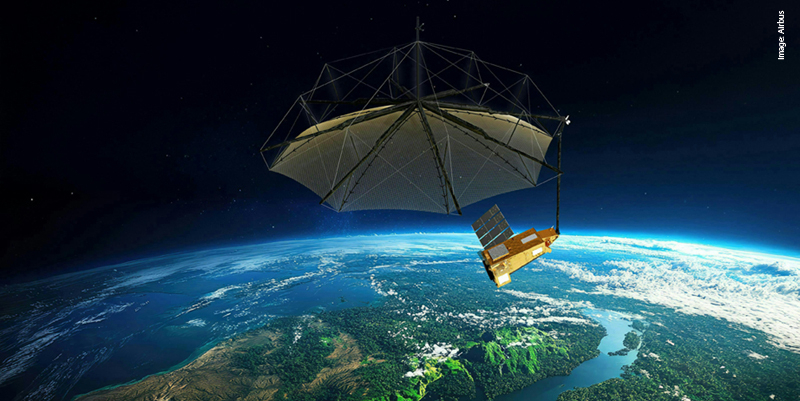DLR Planetary researchers generate a new 3D model of the lunar surface of unprecedented accuracy and competeness
Although the Moon is so far the only celestial body other than Earth on which a human being has ever walked, the topography of its surface has not been studied comprehensively. This is why NASA\'s Lunar Reconnaissance Orbiter (LRO) has been orbiting the Moon since June 2009, using a wide-angle camera to digitally record its cratered surface. Using a total of 70,000 images, researchers at the German Aerospace Center (Deutsches Zentrum für Luft- und Raumfahrt; DLR) have now created a digital 3D model of the Moon with unprecedented accuracy and completeness. The video shows a number of virtual flights over the surface of Earthâs satellite.The landing sites of Apollo 11, 12 and 14 are located centrally in a region depicted in tranquil blue. In these colour-coded 3D images of the lunar surface, blue is used to indicate low-lying flat ground. It was not until the later missions that the US became more adventurous in the choice of a landing site. For example, the astronauts on the Apollo 15 and 17 missions were sent into regions of the Moon that posed a much greater challenge. In the model created by the DLR Institute of Planetary Research in Berlin-Adlershof, these areas are depicted in green â indicating that these regions are at a slightly higher elevation, and are not as flat as those used for the earlier Moon landings. To make this 3D depiction possible, the wide-angle camera (LROC WAC) on board the American LRO spacecraft recorded images from an altitude of 50 kilometres. In the next step, DLR project scientist Frank Scholten from the Institute of Planetary Research evaluated the 70,000 stereo images, using special software to compare them pixel by pixel, then used the information relating to where the picture was taken and the direction of view of the camera to calculate roughly 100 billion 3D points. The result is a 3D model covering about 37 million square kilometres, which is more than 98 percent of the lunar surface and over twice the area of Russia.The Moon in focusIt took a network of 40 computers two weeks of computing time to perform these elaborate calculations. The software required for this task was developed at the DLR Institute of Planetary Research and had already been employed successfully on image data from other planets; for example, the Mars Express mission. The result, known as the GLD 100 (Global Lunar Digital Terrain Model), delivers elevation figures at 100-metre intervals right across the surface of the Moon. \"Over the last few years, planetary research has been focusing primarily on other planets, Mars being just one example. The Moon remained in the background during this period,\" explains Scholten. The team led by DLR planetary researcher Jürgen Oberst performed its measurements of the Moon in several different ways. Camera imagery was complemented by data from the Lunar Orbiter Laser Altimeter (LOLA), which employs laser pulses to measure elevations on the lunar surface; these were then compared with the data in the GLD100 elevation model. These two methods complemented one another; the laser instrument provides extremely accurate elevations, but covers only part of the lunar surface. Gaps of several kilometres still exist, particularly in regions near the lunar equator. The cameras on board the LRO compensate for this because they are able to completely cover large areas. \"Our elevation model will help planetary researchers to examine questions for which an accurate and complete knowledge of the topography of the Moon is important,\" says Scholten. With this data, scientists wish to investigate a number of things, including whether the central latitudes of the Moon are home to any deep craters where water ice might exist in the permanent shadows - in a similar way to the regions close to the two poles.The elevation model clearly depicts the diverse landforms â for example, mountains, craters and rilles. The colour-coded view depicts the third dimension â altitude â in colours ranging from blue (roughly -9100 metres) to red/white (roughly +10,760 metres). Whereas the \'front\', or Earth-facing side of the Moon, with its flat plains, or mares, and the Apollo landing sites, appear for the most part in blue and green, the hitherto relatively unexplored far side of the Moon â the side not visible from Earth â has its high ground depicted in red. This far side is home to the lowest as well as the highest points on the Moon. \"This depiction clearly shows how gigantic and deep the South Pole Aitken Basin is,\" explains DLR planetary researcher Ulrich Köhler. This basin has a diameter measuring about 2500 kilometres, making it the largest known impact crater in the Solar System. It is about 13 kilometres deep \"and is perhaps a window on the distant past of the Moon because it may extend down to the original mantle,\" suggests Köhler. Using the data from this elevation model, scientists can also simulate low-altitude flights across the lunar surface (visit http://www.dlr.de/dlr/presse/en/desktopdefault.aspx/tabid-10172/213_read-2065/year-2011/ for online and downloadable movies). The \'sightseeing\' flights over the Apollo 15 and Apollo 17 landing sites show clearly that the astronauts landed close to mountain ranges some several thousand metres in height and set out from there to explore the Moon.Assessment for future moon landings\"With this data, we are laying important foundations for future Moon missions, whether manned or unmanned,\" states lunar researcher Ulrich Köhler. \"These 3D maps of the Moon enable us to better evaluate future landing sites.â There are a total of seven instruments on board the NASA orbiter; DLR Space Administration funds the German members of the LRO team. With each new orbit of the Moon, and with each new image of the lunar surface, the planetary researchers are able to further refine their 3D model of Earth\'s companion. \"Every month, we cover the entire surface of the Moon once more with the camera,â explains Frank Scholten. âThis data is included in our model on a continuous basis, which enables us to view the surface in ever greater detail.\"Pictured above: Colour-coded representation of the elevation of the lunar surface (Credit: NASA / GSFC / ASU / DLR)
For more information visit:
Subscribe to our newsletter
Stay updated on the latest technology, innovation product arrivals and exciting offers to your inbox.
Newsletter

